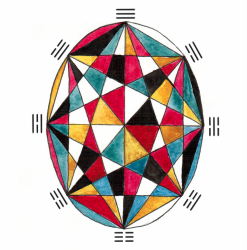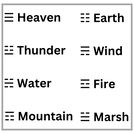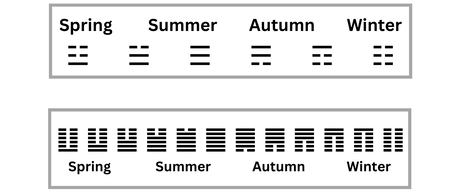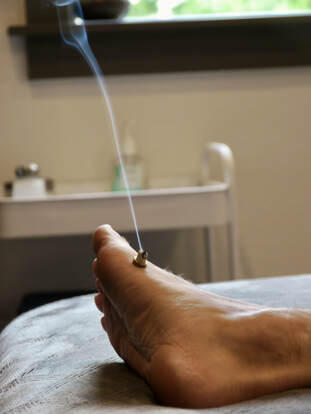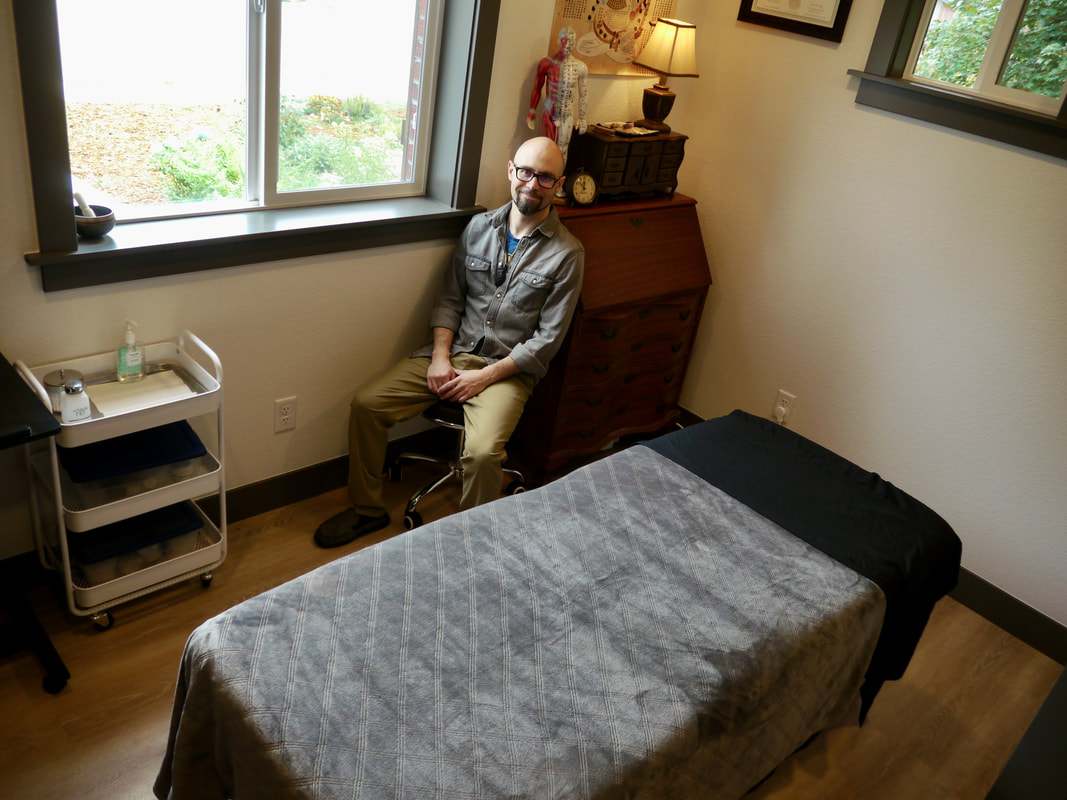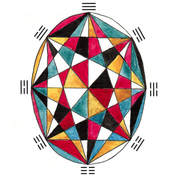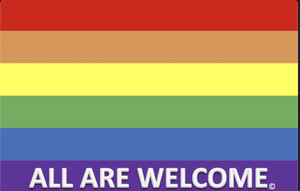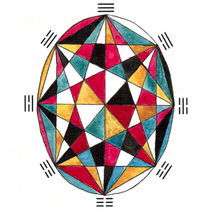ACUPUNCTURE & INNER ALCHEMY
"Qi cannot travel without a path, just as water flows or the sun and moon orbit without rest."
-- 灵枢 Líng Shū, Chapter 17
-- 灵枢 Líng Shū, Chapter 17
Acupuncture & Inner-Alchemy
Acupuncture is a form of medicine that utilizes physical manipulation of specific points on the body to achieve positive intervention during the course of disease. Alongside acupressure and moxibustion, broadly referred to as 針灸 "Zhēnjiǔ," this therapeutic modality constitutes one branch of several health care practices that developed in Asia over thousands of years.
These modalities are generally organized in to "Five Branches:" Acupuncture, Bodywork, Exercise, Nutrition, and Herbalism. The National Institute of Health identifies several disorders that may be treated beneficially by Chinese Medicine. To read more about the other forms of healthcare which developed alongside acupuncture please visit HOLISTIC MEDICINE | CHINESE HERBALISM.
Together the above mentioned therapies are often collectively referred to under the umbrella of longevity arts which promote health and wellness - an action often achieved through balancing a person's 氣 "Qì" (ch-EE) or "Ki" (k-EE). 氣 Qi/Ki is a word that has many contextual definitions. In the practice of meditation 氣 Qi/Ki is often described as "mystical energy," while when used in a modern medical context it can more clearly be defined as "functional activity."
內丹 "Nèidān" or Inner Alchemy is the practice of identifying and refining the innate aspects of one's temperament for health, longevity, and spiritual progression. It is a self-cultivation process primarily taught using visualization techniques to foster awareness, with concurrent instruction in developing upright posture and regulated deep-breathing (see the FAQ below), in addition to the observation of a moderate lifestyle.
These modalities are generally organized in to "Five Branches:" Acupuncture, Bodywork, Exercise, Nutrition, and Herbalism. The National Institute of Health identifies several disorders that may be treated beneficially by Chinese Medicine. To read more about the other forms of healthcare which developed alongside acupuncture please visit HOLISTIC MEDICINE | CHINESE HERBALISM.
Together the above mentioned therapies are often collectively referred to under the umbrella of longevity arts which promote health and wellness - an action often achieved through balancing a person's 氣 "Qì" (ch-EE) or "Ki" (k-EE). 氣 Qi/Ki is a word that has many contextual definitions. In the practice of meditation 氣 Qi/Ki is often described as "mystical energy," while when used in a modern medical context it can more clearly be defined as "functional activity."
內丹 "Nèidān" or Inner Alchemy is the practice of identifying and refining the innate aspects of one's temperament for health, longevity, and spiritual progression. It is a self-cultivation process primarily taught using visualization techniques to foster awareness, with concurrent instruction in developing upright posture and regulated deep-breathing (see the FAQ below), in addition to the observation of a moderate lifestyle.
The Five Spirits
In the historical context of Chinese medicine related to the concept of Spirit, the word 神 "Shén" (which means mind, expression, energy, spirit, and/or deity) led to an understanding that the psyche contains five fundamental and interdependent parts. Often collectively known as the “Five Spirits,” they are described respectively as the: "Awareness," "Willpower," "Intellect," "Ethereal Soul," and "Corporeal Soul." Understanding the differentiation and interrelationships of these parts constitutes a fundamental aspect for developing the practice of self-cultivation.
Discussing the nuance surrounding the "Five Spirits" forms an integral part of Nèidān - Health Coaching sessions at Open Mind Holistics.
Development of this philosophical concept over time within the history of Chinese Medicine produced a system of correspondences connecting each of the "Five Spirits" to distinct emotions as well as acupuncture points/channels. The following examination of the "Corporeal Soul" (and its relationship to the "Ethereal Soul") is not meant to be comprehensive, and simply serves to illustrate the shape of that process for learning to work with visualization techniques for each of the "Five Spirits."
The "Ethereal Soul" is called 魂 "Hún" and is also known as the "Cloud-Soul." It corresponds to the Liver channel system and is described as the part-of-consciousness-that-contains-our-dreams-and-memories, as well as being considered an analogue to a concept common to many Western religions of an individual human's "immortal soul." The "Corporeal Soul" is called 魄 "Pò" and is also known as the "Earthbound-Soul" and/or the "White-Soul." It is understood to be the physical part of the self which can become interred after death, and is thought to carry an imprint of the dominant emotions which constituted whatever temperament that person exhibited during life. The "Corporeal Soul" corresponds to the Lung channel system.
The "Corporeal Soul" can also be defined as "the spiritual essence of the physical body." It represents the physiological aspect that serves as a tangible medium for containing and grounding the vital mental-emotional functions essential to both animal and human life. It is the embodiment of the "mind-body" connection - the "body" referenced by that phrase "mind-body" - exhibiting tendencies and behaviors that may appear distinct from our conscious thoughts and unconscious dreams.
Learning about (and meditating on) the established correspondences in daily life, in addition to having a trained practitioner utilize the principles based on that system in treatments, constitute the primary ways in which this facet of Inner-Alchemy relating to the Five Spirits can be relevant in a modern clinical context.
Discussing the nuance surrounding the "Five Spirits" forms an integral part of Nèidān - Health Coaching sessions at Open Mind Holistics.
Development of this philosophical concept over time within the history of Chinese Medicine produced a system of correspondences connecting each of the "Five Spirits" to distinct emotions as well as acupuncture points/channels. The following examination of the "Corporeal Soul" (and its relationship to the "Ethereal Soul") is not meant to be comprehensive, and simply serves to illustrate the shape of that process for learning to work with visualization techniques for each of the "Five Spirits."
The "Ethereal Soul" is called 魂 "Hún" and is also known as the "Cloud-Soul." It corresponds to the Liver channel system and is described as the part-of-consciousness-that-contains-our-dreams-and-memories, as well as being considered an analogue to a concept common to many Western religions of an individual human's "immortal soul." The "Corporeal Soul" is called 魄 "Pò" and is also known as the "Earthbound-Soul" and/or the "White-Soul." It is understood to be the physical part of the self which can become interred after death, and is thought to carry an imprint of the dominant emotions which constituted whatever temperament that person exhibited during life. The "Corporeal Soul" corresponds to the Lung channel system.
The "Corporeal Soul" can also be defined as "the spiritual essence of the physical body." It represents the physiological aspect that serves as a tangible medium for containing and grounding the vital mental-emotional functions essential to both animal and human life. It is the embodiment of the "mind-body" connection - the "body" referenced by that phrase "mind-body" - exhibiting tendencies and behaviors that may appear distinct from our conscious thoughts and unconscious dreams.
Learning about (and meditating on) the established correspondences in daily life, in addition to having a trained practitioner utilize the principles based on that system in treatments, constitute the primary ways in which this facet of Inner-Alchemy relating to the Five Spirits can be relevant in a modern clinical context.
The Book of Changes
|
Another time honored source related to the process of self-cultivation can be found in the content of the 易经 Yijing (also known as the I-Ching, pronounced EE-Jing) "The Book of Changes." This text describes that of all the various inter-related natural phenomena that could be labeled as either Yin and Yang, relationships between things are more completely symbolized through eight distinct images called the "Eight Trigrams." Each image is depicted as a series of three vertically-stacked horizontal "lines" and given a name representative of nature:
|
The symbolism of the "Eight Trigrams" conveys an idea that natural patterns of evolution exist which can be observed and are inherent to change. This concept is communicated through interpreting each trigram in a way that highlights the proportional composition of Yin and Yang parts inherent to its identity. In this scheme, a "broken line" is Yin (best exemplified through ☷ the "Earth Trigram" composed of three broken lines) while an "unbroken line" is Yang (demonstrated within ☰ the "Heaven Trigram" composed of three unbroken lines). When comparing broken and unbroken lines, within one trigram or between multiple different trigrams, there is particular significance to be found when considering both the ratio between them as well as their order (from bottom to top).
Schools of knowledge based on "The Book of Changes" tend to focus one's study on examining interactions between people and their environments as well as how all things exert subtle influences on each other to affect change over time.
The "Eight Trigrams" are themselves further combined with each other in the text of "The Book of Changes" to create "Sixty-Four Hexagrams." These hexagram images are more often specifically named to represent social groups and/or interactions. Besides gaining additional insights into identity from their names, the imagery of the trigrams and hexagrams presents a way to track changes of the seasons. This can be seen through the following examples:
Schools of knowledge based on "The Book of Changes" tend to focus one's study on examining interactions between people and their environments as well as how all things exert subtle influences on each other to affect change over time.
The "Eight Trigrams" are themselves further combined with each other in the text of "The Book of Changes" to create "Sixty-Four Hexagrams." These hexagram images are more often specifically named to represent social groups and/or interactions. Besides gaining additional insights into identity from their names, the imagery of the trigrams and hexagrams presents a way to track changes of the seasons. This can be seen through the following examples:
|
Charting progression of transformation from before to after completion is why this book is known as "The Book of Changes." Using the parameters of assessing images based on the ratio and order of broken to unbroken lines, as well as considering the individualities of each trigram/hexagram in relation to one another, a practitioner can make many varieties of clinical assessments within a treatment setting. Patients can benefit from "The Book of Changes" by learning a form of self-reflection based on a framework of evaluating social-interactions that has been in existence for over three-thousand years.
|
Treatments at Open Mind Holistics often are driven by insights gained from examinations of the trigrams and hexagrams, however patients are always encouraged to ask specific questions or prompt for more information.
|
Working on a Mind-Body Level
Stress and disease often are due to a lack of physiological balance, and can also themselves be initial causes. In the practice of traditional acupuncture, such imbalances are described as dysfunctional "qi-dynamic." This is the same as saying "stress disrupts the body's capacity for dynamic functional activity." Stimulating points through needle insertion, heat application, massage, and meditation therapeutically alters the movements of qi to support disease prevention while improving the body's innate healing ability.
Qi/Ki encompasses all the functional processes of the body, including:
|
Generally - stimulating an acupuncture point calls our attention and focus to that part of the body as a part of the healing process. Each person responds to needle insertion differently, and accordingly many acupuncturists know multiple styles of needle manipulation in order to accommodate individual needs.
- FAQ -
WHY SHOULD SOMEONE GET ACUPUNCTURE?Many people seek out an acupuncturist in order to treat musculoskeletal disorders, as well as for chronic pain and stress management. In 1979, the World Health Organization published a long list of the variety of conditions treated by acupuncture such as: anxiety, irritable bowel syndrome (IBS), numerous gynecological problems, early stages of cold and flu, temporomandibular joint (TMJ) syndrome, asthma, and acid-reflux. Through a 1997 publication, the National Institute of Health states acupuncture can treat a variety of disorders -- including: nausea and vomiting, addiction, stroke rehabilitation, headache, menstrual cramps, tennis elbow, fibromyalgia, myofascial pain, osteoarthritis, low back pain, and carpal tunnel syndrome. In 2016 the National Center for Complementary and Integrative Health published updated guidelines for those seeking more information.
HOW DOES ACUPUNCTURE WORK?From a Western perspective many explanations are necessary to encompass the breadth of physiological effects of acupuncture. This is due to the wide range of body systems affected within the modern medical paradigm. The following serves as a small portion:
HOW LONG WILL I NEED TO BE TREATED?The course of treatment will always depend upon the individual and the presenting pattern, however generally patients are advised to be treated once or twice weekly (and as often as every day in certain situations) until the illness has resolved. Many acute conditions find resolution within 1-4 weeks while chronic disorders may take anywhere between 6-10 weeks or longer to resolve.
|
DOES ACUPUNCTURE HURT?Often needling can be painless and produces a sense of deep relaxation. A fun fact is that because they are so thin, about 35-40 acupuncture needles can fit into one hypodermic needle. Sometimes a person can feel a slight pinch upon insertion, but this sensation typically fades quickly. Occasionally a point will feel a strong dull ache after needling, this is a sign of therapeutic effect and often fades within minutes.
WHAT CAN I EXPECT AS A NEW PATIENT?Before the session you will be provided with a form where you can give detailed information regarding your health history, lifestyle habits, and specific concern for reaching out to make an appointment. During your first treatment, you will have an additional detailed evaluation and cover health history verbally through an interview with your practitioner. This will take longer than future sessions as time is given for you to learn the specifics of any relevant and/or new information. At the end a summary is given regarding the initial assessment, treatment recommendations, and pathways to identified goals.
WHAT IS THE CONNECTION BETWEEN HEALTH-CARE AND INNER ALCHEMY?While philosophical implications for self-cultivation are relevant, the purpose of one's starting to practice is often fundamentally rooted in affecting physiological changes. Through the application of Eastern medical techniques, trained practitioners can alleviate discomfort that often arises during the course a person's training due to patterns which have become habituated. Inner Alchemy can in this way be viewed as forming an essential part of health-care, one which has capacity to holistically address a myriad of concerns. Whether being re-emergence of pain from a past trauma that had been dormant, becoming aware of blockages in numb body parts that served as self-protection for extended periods, or simply due to using the mind/body in a new way which leads to an undesirable outcome: it is implicit that during the development process that a person will be periodically confronted with challenging and uncomfortable circumstances. Modern medical scientists have also begun to recognize the correlations of wellness promotion with exercises which have their roots in Nèidān - such as mindfulness and deliberate "belly-breathing."
|
At Open Mind Holistics, our acupuncturist, Isaac Hoft, will work to support your physical and mental health through acupuncture, bodywork, moxibustion, and other modalities. In addition to a Traditional Chinese Medicine perspective, Isaac is trained in many disciplines including Jade Purity Taoist Medicine, Kototama Inochi Medicine, Global Balance Method, and SAAM Acupuncture. Isaac is passionate about helping people heal through acupuncture and grow through inner alchemy.
To learn about Integrative Holistic Treatments that combine Acupuncture and Inner Alchemy with Chinese Herbalism and Art Therapy please visit INTEGRATIVE HOLISTIC TREATMENTS.
To learn about Integrative Holistic Treatments that combine Acupuncture and Inner Alchemy with Chinese Herbalism and Art Therapy please visit INTEGRATIVE HOLISTIC TREATMENTS.
